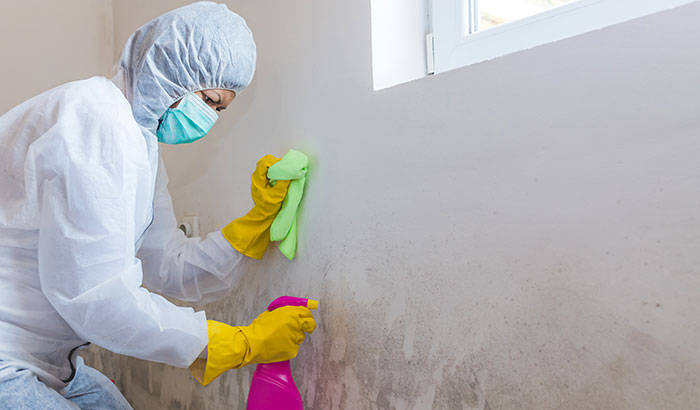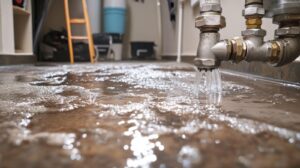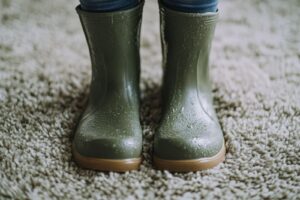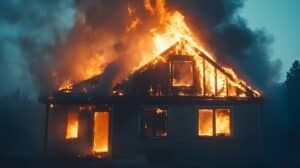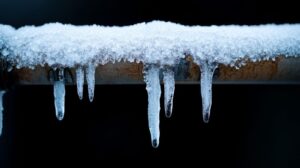If you have mold in your home, your next step is to figure out what needs to be done for mold remediation. Mold growth can lead to mold damage, which is not fun for anyone to find in their home.
In this article, we will give you a rundown of what mold remediation is, the most frequently asked questions regarding mold cleanup, and the answer to each.
First up – What is Mold Remediation?
Mold remediation is the process of identifying, containing, and removing mold from a contaminated area. Mold is a type of fungus that grows in damp or humid environments and can cause mold damage to structures and pose health risks to individuals who come into contact with it. Therefore, mold remediation is crucial for maintaining a safe and healthy environment and requires specialized knowledge and equipment.
The first step in mold remediation is identifying the presence of mold. A musty odor, visible discoloration or staining, or physical symptoms such as respiratory issues or skin irritation can often detect mold. Once the presence of mold has been confirmed, it’s important to identify the source of the moisture fueling its growth. Mold thrives in damp or humid environments, so identifying and addressing any moisture problems is essential to prevent mold from recurring.
The next step in mold remediation is containing the affected area. This involves sealing off the site from the rest of the building to prevent the mold spores from spreading to other places. This can be done through the use of physical barriers such as plastic sheeting or by closing off HVAC vents to prevent air circulation.
Once the affected area has been contained, the mold can be removed. This involves physically removing mold growth and any contaminated materials, such as drywall or carpeting. Depending on the extent of the mold growth, this process can range from a simple cleaning to more extensive demolition and reconstruction of the affected area.
During the mold removal process, it’s essential to take proper safety precautions to prevent the spread of mold spores and protect workers and occupants from exposure. This can include wearing protective equipment such as respirators and gloves, using HEPA filters to capture mold spores, and properly disposing of contaminated materials.
After removing the mold, the affected area must be thoroughly cleaned and dried to prevent the mold from returning. This involves cleaning all surfaces with specialized cleaners and drying out the area to prevent residual moisture from fueling new mold growth.
It’s important to note that mold remediation is not a one-time fix. Addressing the underlying moisture problem is crucial to preventing mold from returning. This may involve repairing leaks or addressing ventilation issues to improve airflow and prevent condensation.
Mold remediation is a specialized process that requires the expertise of trained professionals. Therefore, working with a reputable mold cleanup company with experience identifying and removing mold safely and effectively is important. Additionally, it’s important to follow proper safety precautions to prevent the spread of mold spores and protect the health of workers and occupants.
Mold remediation can be complex and time-consuming, but it’s essential for maintaining a safe and healthy environment. If you suspect mold growth in your home or building, it’s important to address it promptly to prevent further damage and potential health risks.

Methods of Mold Remediation
Depending on the extent and severity of mold growth, several different methods can be used for mold remediation. Some of the most common ways include:
- Surface Cleaning: This involves removing mold from surfaces such as walls, floors, and ceilings. This can be done using specialized cleaners and tools such as scrub brushes, HEPA vacuums, and air scrubbers.
- Dry Ice Blasting: This process involves using dry ice pellets to blast mold off surfaces. The pellets are propelled by compressed air, and the freezing temperature of the dry ice causes the mold to freeze and break apart.
- Chemical Treatment: This involves using chemicals to kill the mold and prevent it from regrowing. This can include bleach, hydrogen peroxide, or specialized mold-killing solutions.
- Encapsulation: This involves sealing off the mold with a special coating that prevents it from releasing spores and spreading to other areas. This method is often used in situations where complete removal of the mold is not possible.
- Removal of Affected Materials: In cases where the mold has deeply penetrated porous materials such as drywall or carpeting, removing and replacing these materials may be necessary.
Regardless of the method used, it’s important to address mold growth as soon as it’s identified to prevent further damage and potential health risks. Working with a qualified mold remediation professional can help ensure that the process is done safely and effectively and that the mold does not return.
In addition to addressing mold growth, it’s also important to prevent mold from recurring in the future. This may involve improving ventilation and airflow in damp areas, repairing leaks, addressing moisture issues, and monitoring humidity levels to prevent condensation.
Mold remediation is a complex and multi-step process that requires specialized knowledge, equipment, and safety precautions. While it can be time-consuming and costly, addressing mold growth promptly can help prevent further damage and ensure a safe and healthy environment for occupants.
Now, let’s take a look at the most frequently asked questions regarding mold remediation and their answers:
– What are the health risks associated with mold exposure?
Mold exposure can cause various health effects, from minor allergic reactions such as sneezing and skin irritation to more severe respiratory problems, headaches, and even neurological symptoms in some cases. Long-term exposure to some types of mold can also increase the risk of certain types of cancer.
– How can I tell if there is mold in my home?
Mold may be visible on surfaces such as walls or ceilings, hidden behind walls, or in other concealed areas. A musty odor or signs of water damage may also indicate the presence of mold. Professional mold testing may be necessary to identify hidden mold growth.
– Can I remove the mold myself, or do I need to hire a professional?
Small areas of mold can often be cleaned up with household cleaners, but more extensive mold growth may require professional remediation. DIY mold remediation can be dangerous if proper precautions are not taken.
– What are the steps involved in mold remediation?
Mold cleanup typically involves identifying the moisture source promoting mold growth, containing the affected area, physically removing the mold, and addressing any underlying moisture problems. Proper disposal of contaminated materials is also important to prevent the spread of mold spores.
– How long does mold remediation take?
The duration of mold remediation will depend on the extent of the mold growth and the scope of the remediation work required. Small areas of mold growth may be remediated in a matter of hours, while larger or more extensive growth may take several days or even weeks to remediate. Working with a qualified and experienced mold remediation professional is important to ensure the job is done properly and efficiently.
– Will mold remediation affect my indoor air quality?
Mold remediation should improve indoor air quality by removing mold and addressing any underlying moisture problems. However, the remediation process can temporarily release mold spores into the air, so it’s important to take proper precautions during and after the remediation process.
– Can mold grow back after remediation?
Mold can regrow if the underlying moisture problem is not addressed or the remediation work is not thorough enough. Regular monitoring and maintenance are necessary to prevent mold from returning.
– What types of mold are commonly found in indoor environments?
Common indoor mold species include Aspergillus, Cladosporium, Penicillium, and Stachybotrys. Some types of mold, such as Stachybotrys, can produce mycotoxins that can be harmful to human health.
– Is all mold dangerous?
Not all mold is dangerous, but some species can produce mycotoxins that can be harmful. Even non-toxic molds can cause allergic reactions and respiratory problems in some people.
– How can I prevent mold growth in my home?
Preventing mold growth involves controlling moisture levels in the home, including maintaining adequate ventilation, fixing leaks promptly, and addressing any humidity issues. Regular cleaning and maintenance can also help prevent mold growth.
– Can mold cause structural damage to my home?
In some cases, mold growth and mold damage can weaken structures such as walls, ceilings, and floors if allowed to grow unchecked. It’s important to address mold growth promptly to prevent structural damage.
– Will my insurance cover the cost of mold remediation?
Insurance coverage for mold remediation will depend on the specific policy and the circumstances of mold growth. Some policies may have exclusions for mold remediation or require specific conditions to be met before coverage is available. Reviewing your policy and consulting with your insurance provider to understand your coverage is important.
– Can I stay in my home during mold remediation?
It depends on the mold growth’s extent and the remediation work’s scope. Small areas of mold growth may not require temporary relocation, but more extensive growth may require temporary relocation to ensure safety and avoid cross-contamination.
– What safety precautions should be taken during mold remediation?
Mold remediation can release mold spores and other contaminants into the air, so it’s important to take proper safety precautions such as wearing protective equipment, sealing off the affected area, and properly disposing of contaminated materials.
– Can I use bleach to clean up mold?
Bleach is not recommended for cleaning up mold because it can release harmful fumes and is ineffective at killing all mold types. Professional-grade cleaners are typically used for mold remediation.
– Can I paint over the mold?
Painting over mold is not recommended because it does not address the underlying moisture problem and can worsen mold growth by sealing in the moisture. Proper remediation is necessary to remove the mold and address any underlying moisture problems.
– How can I prevent mold growth in my bathroom?
Bathrooms are a common area for mold growth due to the high humidity levels. Preventing mold growth in the bathroom involves proper ventilation, using exhaust fans, and regularly cleaning and drying surfaces.
– What should I do if I suspect mold in my workplace?
If you suspect mold in your workplace, report it to your employer or building management immediately. They should arrange for a professional mold inspection and remediation if necessary.
– Can I sue my landlord or employer for mold exposure?
Legal recourse for mold exposure will depend on the specific circumstances. Still, in some cases, it may be possible to file a lawsuit against a landlord or employer for failing to provide a safe and healthy environment. It’s best to consult a lawyer specializing in mold-related cases to understand your legal options.
– What should I do if I find mold in my HVAC system?
Mold growth in the HVAC system can spread mold spores throughout the home, so it’s important to address it promptly. Professional HVAC cleaning and remediation may be necessary to remove the mold and prevent it from recurring.
– Can I prevent mold growth in my basement?
Basements are a common area for mold growth due to their cool and damp conditions. Preventing mold growth in the basement, just like in the bathroom, involves controlling humidity levels, properly ventilating the space, and addressing water leaks or drainage issues.
– What should I do if I find mold on my carpet?
Mold growth on carpeting typically requires professional cleaning and remediation to remove the mold and prevent it from spreading. In some cases, it may be necessary to replace the carpeting if the mold growth is extensive.
– Can I use a dehumidifier to prevent mold growth?
Dehumidifiers can effectively control humidity levels and prevent mold growth in areas such as basements and bathrooms. However, they should be used with proper ventilation and regular cleaning to prevent mold growth.
– How can I prevent mold growth in my attic?
The attic is a common area for mold growth due to its lack of ventilation and insulation. Preventing mold growth in the attic involves ensuring proper ventilation, addressing leaks or moisture problems, and properly insulating the space.
– Can I use a fan to prevent mold growth?
Fans can effectively promote air circulation and prevent stagnant moisture, which can contribute to mold growth. However, fans should be used with other preventative measures such as proper ventilation and regular cleaning.
– Can mold grow in my air ducts?
Mold can grow in air ducts if sufficient moisture and organic material are present. This can lead to mold spores being circulated throughout the home, potentially causing health issues. Professional cleaning and remediation of the air ducts may be necessary to remove the mold and prevent it from recurring.
– Can I use vinegar to clean up mold?
Vinegar is sometimes suggested as a natural remedy for cleaning up mold, but it is ineffective at killing all mold types and may not be strong enough for severe mold growth. Professional-grade cleaners are typically used for mold remediation.
– Can mold cause health problems?
Mold exposure can cause various health problems, particularly for individuals with allergies, asthma, or weakened immune systems. Symptoms can include respiratory issues, skin irritation, and allergic reactions. It’s important to address mold growth promptly to avoid health risks.
Black Diamond Restoration – A Local Mold Damage Remediation Company
A professional should handle big mold problems that cover more than 10 square feet. When mold spreads as much as that, getting rid of it can be difficult.
Contact Black Diamond Restoration today if you have mold restoration needs. We’ll get you back to normal in no time.
toto slot
